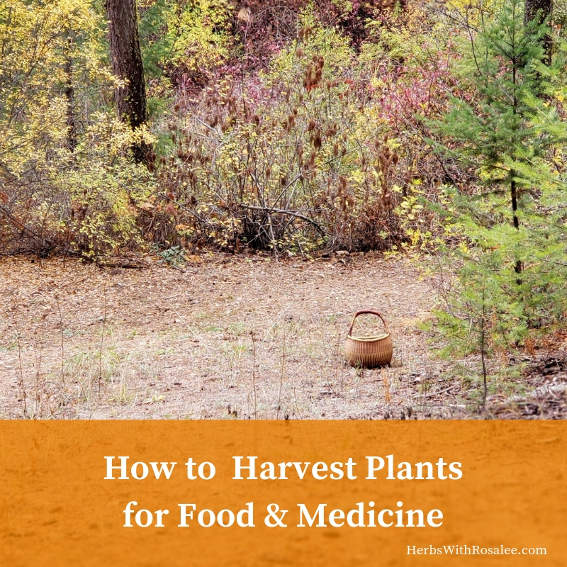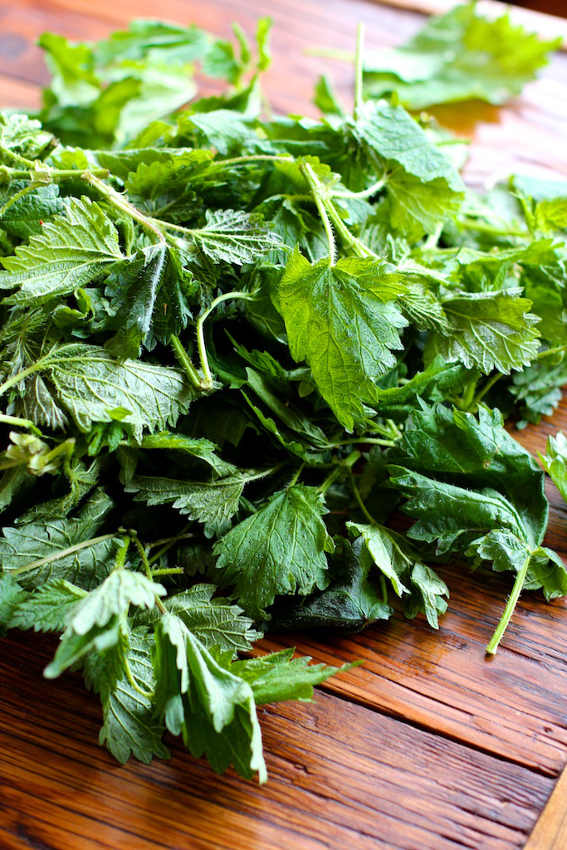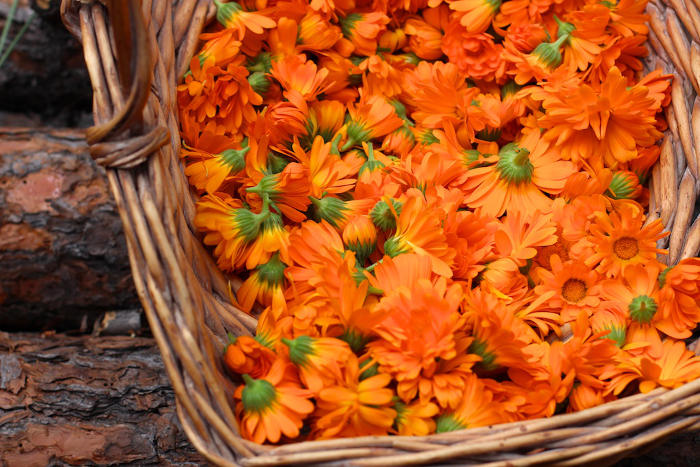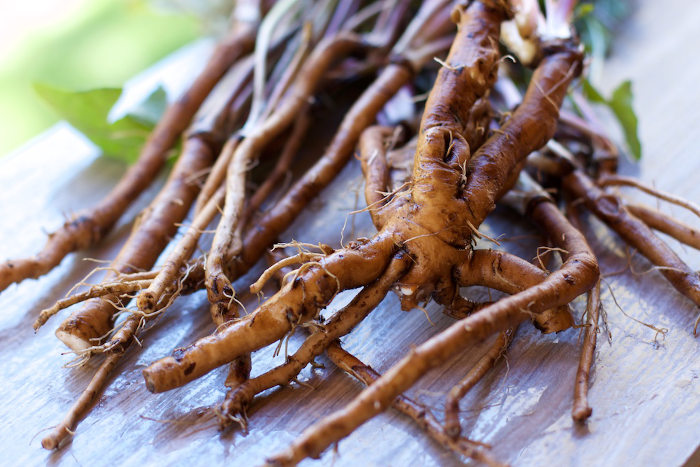Get weekly tips, recipes, and my Herbal Jumpstart e-course! Sign up for free today.

Wildcrafting Herbs for Food and Medicine
Share this! |
|
Before you pluck that flower, dig that root or clip that branch, there are many different things to consider about wildcrafting herbs.
In case you missed it, here’s the earlier parts of this series.
Part 1: Introduction to Wildcrafting
Part 2: 10 Things to Know for Ethical Wildcrafting
Part 3: Wildcrafting Tools
When it comes to the actual harvest there are no shortcuts and this article cannot cover all aspects of how to ethically harvest every plant. While I give general guidelines, there are ALWAYS exceptions.
I’ve created two handouts to further help you with your harvesting.
The Forager's Checklist will help you to determine if you are ready to harvest a plant and what else you need to know before getting started.
The Forager's Record Sheet helps you keep record of your harvest and your impact on an area.
After almost two decades of learning and teaching about herbs, I strongly believe that the best way to learn about herbs is one herb at a time. The more presence and focus you bring to your studies the more you learn and retain. This is also the best defense against overwhelm.
Before you harvest a plant, really get to know it. Spend time with it. Observe its habitat. Open your awareness to all the life around it.
The land is the real teacher. All we need as students is mindfulness.
Paying attention is a form of reciprocity with the living world,
receiving the gifts with open eyes and open heart.
- Robin Wall Kimmerer, Braiding Sweetgrass
Wildcrafting Herbs: Harvesting Specifics
Wildcrafting Herbs: Leaves and Aerial Portions
Leaves are most often harvested when they are young and fresh looking, generally from spring to early summer. Some tips:
- Spread your impact throughout the stand of plants by taking a few leaves from here and there instead of taking many leaves from a single plant.
- When harvesting leaves from trees, take them from the branches but avoid taking them from the terminal (end of the branch) stem, unless you are pruning the entire branch. (More on pruning later.)
- Many garden plants can be cut back completely and regrow again the same year. You can usually get two or three cuttings from herbaceous plants by harvesting the entire aerial portion just before the plant goes to flower. Stinging nettle (Urtica dioica) is a great example—you can continually cut off the tops of nettle and in this way get many more harvests from a stand.
- Try to harvest leaves and aerial portions when they are not wet. Mid-morning is probably optimal, but reality may dictate when you are able to harvest, too!
Wildcrafting Herbs: Flowers
Harvest flowers at full bloom or just upon opening, depending on the plant. For example, I like to harvest roses while in full bloom (before any wilting occurs), but I harvest calendula and St. John’s Wort flower buds along with the full flowers. Some tips:
- Flowers are very susceptible to mold, and must be harvested when dry. (A note about drying flowers. Plants in the asteraceae family (dandelion, arnica, etc) will turn into seed heads when dried. I prefer to let these wilt and work with them fresh. Other herbalists prefer to let them dry. You can also harvest them in the bud stage to try to prevent them from seeding out. There is no wrong way; a good herbalist is continually experimenting to find what works best for them.)
- Keep in mind that the flowers you harvest will not go to seed or mature into fruit.
- Evening primroses are unique in that you can harvest them in the evening. Oftentimes the flowers are still vibrant in the morning but they will fade by the afternoon.
Wildcrafting Herbs: Roots and Rhizomes
Harvesting roots and rhizomes can lead to the killing of a plant. Sometimes this is necessary and can be done in a way that minimizes a negative impact on a plant population. However, there are several things to know and consider before harvesting roots.
First, ask yourself whether you really need the roots. Many plants have the same properties in their aerial portions. For other plants, aerial portions can be combined with roots to make whole plant medicine, using less root material.
Again, it’s important to know the individual plant you are harvesting so that you can harvest it appropriately.
If harvesting the roots is your goal, then you can take other steps to keep the plant alive.
- Some roots can be divided so the plant continues living.
- The crowns of other plants can be replanted after the roots are removed.
- Other plants can continue to grow if some of the root is left in the ground. (Comfrey and dandelion are good examples.)
- Rhizomes can be followed horizontally through the ground and harvested so that the plant continues to live. Herbalist jim mcdonald shows us how to do this with solomon’s seal here.
- Other plants, like yellow bells and chocolate lilies, can be propagated by harvesting the bulb and then spreading the bulblets that are attached to it.
In general, roots are harvested in the late summer and fall after the plant has gone to seed and the energy of the plant has returned to the roots. If necessary, you can also harvest roots in the spring before the plant has put its energy into the leaves.
Harvesting Herbs: Bark
Bark is best harvested in the spring, when sap is flowing through the inner cambium. Typically, the inner bark is used for medicine. Sometimes I harvest new twigs from a tree and use the entire twig; other times I may strip the bark from the twig using a knife or a vegetable peeler.
Bark can be harvested in two ways.
- Take a vertical strip from a growing tree. This is the least preferable method. Although it doesn’t kill a tree it can open the tree to infections. A drawknife (a horizontal knife with two handles) is a great tool for harvesting bark from the main trunk of a tree.
- My favorite way to harvest bark is by either gathering from a recently felled tree or by pruning branches. Pruning is a fabulous way to tend trees in the wild while also getting the medicine you need. Here are some simple principles:
- Have the correct size pruning shears so that you can make a clean cut.
- Keep your shears sharp!
- Prune branches that are pointing down.
- Prune branches that are rubbing together or competing for the same space on the tree.
- When pruning a tree for bark, prune off any dead limbs to help the tree avoid infestation.
Never harvest bark in a circle around the trunk of a tree as this will certainly kill the tree by literally cutting off its supply of nutrients.
Harvesting Herbs: Conclusion
This article series is meant as a stepping stone for beginning wildcrafters to learn the basics of wildcrafting herbs ethically and sustainably.
You will learn the most by venturing into the habitats around you, being aware of your impact on an area, and continually evolving your relationship with the ecosystem.
A lot of information about ethical harvesting has been lost to us and the only way we can regain it is by developing these skills on our own.
Wildcrafting herbs is so much more than the harvesting of plants. It’s about the connection to the world around us and a growing responsibility of our own role in keeping an area vibrant and healthy.
It is my hope that with the rise of herbalism we will also see a rise of ethical wildcrafters tending to ecosystems with care and consciousness. By regularly stepping out of our homes and into the world we can be aware of changes, both good and bad, to the areas we depend on for food and medicine. In so doing we can be the voice of the forests, parks, and beaches, and play a part in creating a world where our grandchildren’s grandchildren can safely harvest the bounty of the earth.
The intimacy of working with plants is a tonic in its own right, but it also reveals how close and connected our medicine can be: we need not seek it out in wild, remote places, nor trust only that which is expensive, refined, and manufactured. The dandelion is right there, waiting. It is a safe, simple and powerful way to bring herbalism into the lives of those you love. And root by root, person by person, dandelion breaks apart the rigidity of the Western mechanistic mind just as it breaks through cracks in the pavement.
- Guido Masé, Urban Moonshine Blog

Rosalee is an herbalist and author of the bestselling book Alchemy of Herbs: Transform Everyday Ingredients Into Foods & Remedies That Healand co-author of the bestselling book Wild Remedies: How to Forage Healing Foods and Craft Your Own Herbal Medicine. She's a registered herbalist with the American Herbalist Guild and has taught thousands of students through her online courses. Read about how Rosalee went from having a terminal illness to being a bestselling author in her full story here.



